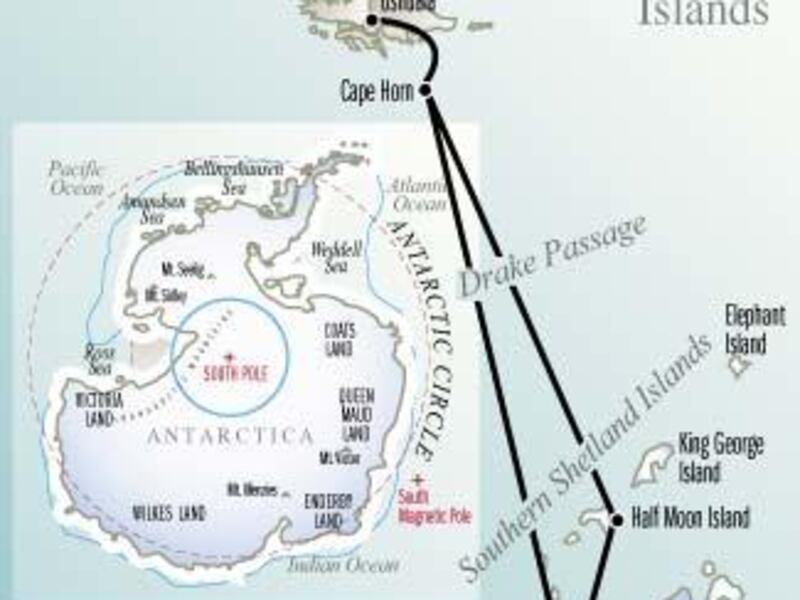The Antarctic Peninsula shore excursions off the anchored cruise ship Marco Polo were usually about a half-mile ride on inflatable Zodiac boats. These outings were enhanced by shipboard lectures by various experts the day prior that enlightened passengers about icebreaker ships and about the region's geology, history/exploration, bird life, ecology, marine life, diving, fisheries and management/governance. These 45-minute slide show-enhanced presentations in the ship's theater put forth some fascinating tidbits and factoids. Including:
On average, a penguin has 170 feathers per square inch; newborns are called pups.
There is no arable land and no permanent crops here as 98 percent of the land is ice and 2 percent rock.
There are no indigenous inhabitants, although there are summer-only and some permanently staffed research stations. Military activity such as weapons testing is prohibited.
The land mass of Antarctica doubles in size during the winter as ice forms over bays, inlets and between islands. It is larger than Australia and the subcontinent of Europe and slightly less than 1.5 times the size of the United States.
If the Antarctic ice were to melt all at once, it would raise the level of the seas 200 feet and flood the East Coast of the United States for hundreds of miles inland.
If all its ice melted it would comprise 80 percent of the total fresh water on Earth.
Antarctica is an ideal place to find meteorites as there are no obstructions such as forests and jungle growth.
An albatross weighs between 6 and 10 pounds and has a wingspan of 11-12 feet.
A blue whale produces up to 25 tons of whale oil.
Wind chill temperatures during the region's summer months can go as low as 35-45 F below zero.
Icebreaker ships, churning three 16-foot diameter propellers powered by 18,000 h/p engines, measure their speed in yards per hour. Moving in a herringbone pattern, the ship's 2-inch thick, steel reinforced, rounded bows are thrust atop the 6- to 10-foot-thick ice six to seven times an hour to crush it from above.
Icebergs and glaciers are color enhanced by red, blue and green algae.
All plant, animal and fungi in the region are "on the edge of its existence" due to the severity of their environment.
Ice core samples extracted by scientists "are Antarctica's archives of past climate conditions and teach us what climate cycles may occur in the future." Core samples reveal the continent is at least 1 million years old.
Seven nations (Argentina, Australia, Chile, France, New Zealand, Norway and the United Kingdom) claim portions of Antarctica as national territory. Forty-five member nations of the Antarctic Treaty (1959) administer Antarctica in accordance with their own national laws. The United States does not recognize the claims of other countries.

